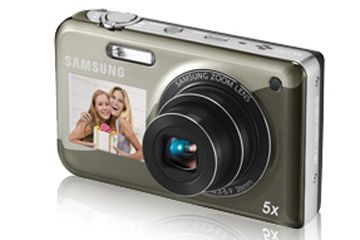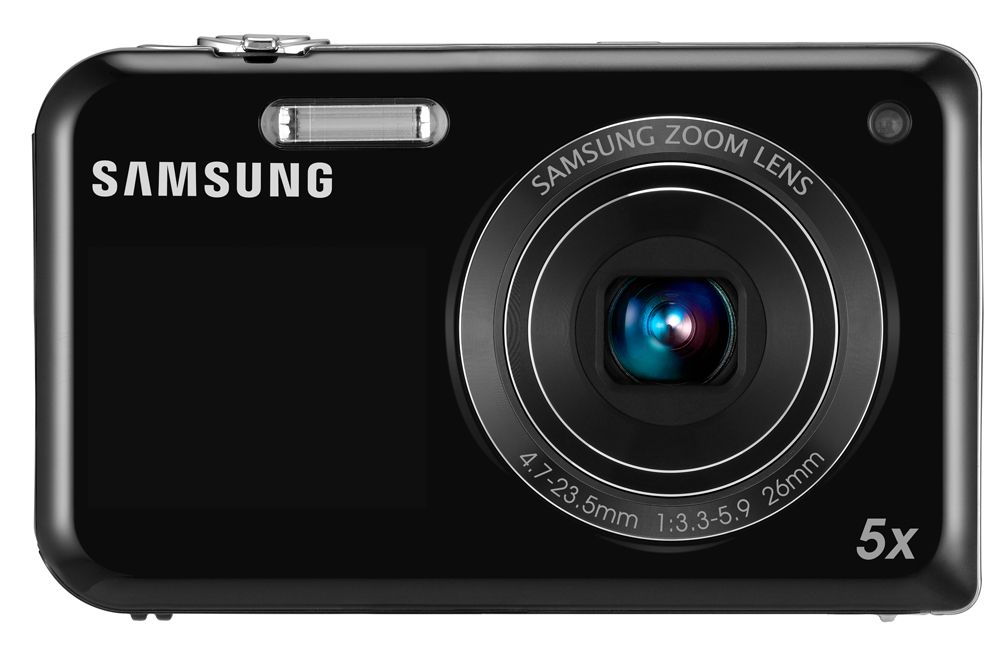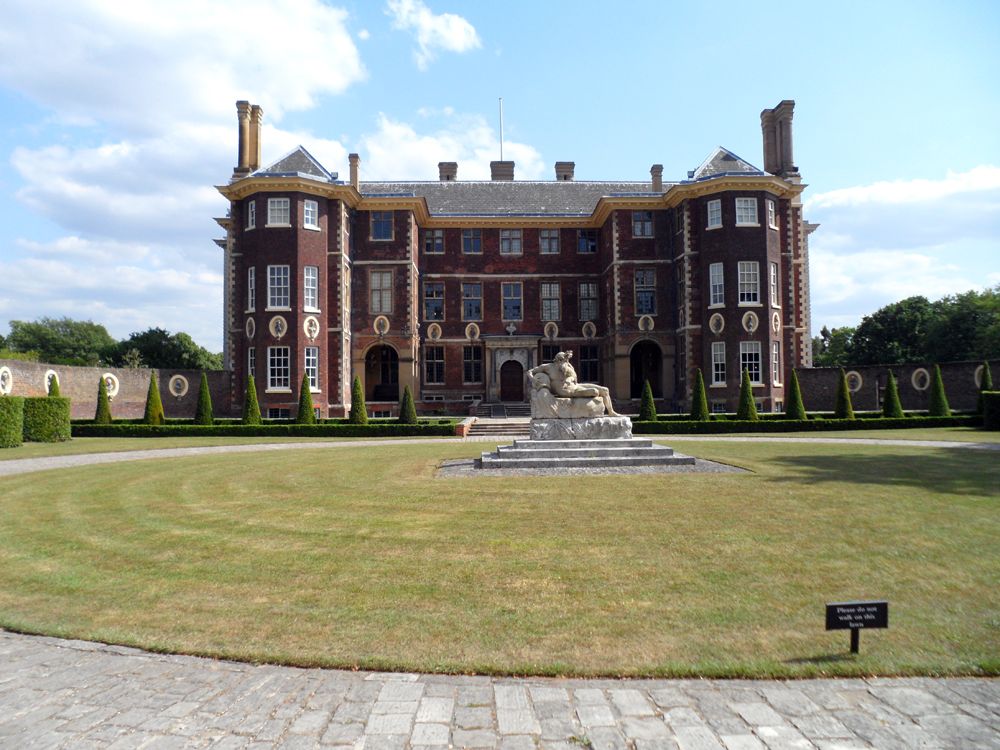Isn’t it always the case that whoever is usually taking the pictures in the family rarely gets into shot themselves, while most attempts at self-portraiture result in merely highlighting double chins or inadvertently chopping half your face out of the frame?
Our quick take
Strip away the dual screen functionality and the PL170 is hardly a game changer in terms of the rest of its feature set or its performance. If you don’t require two screens and are not something of a narcissist then, you may be better served elsewhere as Samsung appears to have rather over-egged the pudding in squeezing 16 megapixels on the PL170’s small-ish chip.
However it is a fairly well built, in fairness it performs adequately (as long as conditions are ideal), and won’t set anyone looking for their latest pocket point and shoot back a great deal.

Samsung PL170 - 3.0 / 5
| FOR | AGAINST |
|---|---|
|
|
Aiming to make the process slightly easier - as well as offering unique differentiation over the competition - Samsung has been offering its “dual view design” digital compact cameras since 2009. Positioning a screen at the front as well as at the back seems like such a simple and inspired idea you also wonder why no one else attempted it earlier.
Design
The 16.1-megapixel, 5x optical zoom Samsung PL170 is the latest example, one of three dual screen models for 2011. It features a small 1.5-inch, 61k dot resolution LCD at the front - large enough to be able to still see your face when holding the camera at arm’s length - and larger 3-inch, 230k-dot variety at the back, presented in standard 4:3 aspect ratio. Though the larger display is activated by default when the camera is powered up, the front screen has its own top plate activation button, so you’re not automatically wasting battery life or distracting passers-by when it isn’t required.
The PL170 is also notable for a subtle backwards slant to its body to theoretically make for an easier, firmer hold when gripped in the palm, though in practice any difference was barely noticeable. This does also mean that the lens is automatically pointing upwards to a similar margin, not that it had much of a bearing on our photography either.
Feeling only a little plastic-y to the touch, rounded edges disguising the familiar boxy shape, the Samsung is portably credit card sized at 95.3 x 57.3 x 19mm and it weighs 153.3g without rechargeable battery or card. It currently sports a manufacturer’s asking price of £179.99 that on paper at least seems fair enough given the headline spec.
In terms of connectivity HDMI and separate AV/USB output ports are hidden away under a metal side flap, and we actually get the now relative rarity of a shooting mode wheel for making capture selections. In the absence of a dedicated video record button, this “old fashioned” way is how the filming option is selected. Also squeezed around the tiny dime-sized dial are scene and subject recognising Smart Auto - reliable enough for most users to leave it as their default camera setting - plus regular auto and Program modes, along with dual image stabilisation, the Samsung regular of beauty shot, night shooting modes, and finally a collection of scene modes.
In action
Press the recessed top plate “power” button and in just under 2 seconds the PL170 readies itself for the first shot. The neatly retracted lens extends from flush to the body to maximum wide angle setting with a low yet audible whirr, the rear LCD blinking into life a fraction of a second later. With complete reliance on the screen for composition and review, visibility is adequate as long as direct sunlight is avoided.
16 megapixels pictures and 720p HD video are committed to tiny and awkwardly fiddly microSD card or 30MB internal memory, with the lens’ focal range equivalent to a wide angle 26mm to 130mm in 35mm terms - the same scope offered by the marginally pricier SH100 model.
A half press of the shutter release button and after a brief pause in which the screen visibly adjusts focus, we’re ready to take a picture, AF point/s highlighted in green with a loud beep of confirmation that focus and exposure have been determined. Press down fully and without noticeable shutter delay the screen blanks out before very briefly displaying the captured image. The image writing process is approximately 2 seconds at full resolution, which is as swift as we could wish for.
Performance
Samsung has crammed 16 megapixels onto a small-ish 1/2.33-inch CCD sensor with the PL170, so it is unsurprising that image noise may be problematic as we move upwards in the ISO range - especially with up to ISO 3200 offered at full resolution - and so it proves. We’re getting grain as low as ISO 200, so it’s worth sticking below ISO 800 to end up with a usable photo. Both ISO 3200 and ISO 1600 are best avoided unless you want to end up with fuzzy shots that look progressively drained of colour.
While image quality might be disappointing if you attempt to stretch the PL170’s capabilities, it nevertheless remains easy to use, albeit with tiny backplate buttons requiring fingertip precision. Still, all the regular features we’d expect are here. Shooting dial aside, there’s the self-explanatory menu button, four-way command pad with central “OK” button and separate playback and “Fn” (Function) buttons ranged alongside each other near the camera base - the latter doubling up as the delete button when the camera is in review mode. A press of the “Fn” key calls up a toolbar on the left hand side of the screen providing access to frequently used functions - just like the “Quick Menu” button provided on Panasonic Lumix compacts.
If you’ve Program mode selected, there are even some photo effects filters to choose from. Included here are a tilt and shift lens style miniature mode, corner dimming “vignetting” effect, soft focus, scratchily distressed “vintage” film mode, a comic book/pop art-style half tone dot effect, sketch effect, fisheye, defog, classic, retro and negative. It’s a fun if gimmicky selection to stop those who might want to occasionally do a bit more than point and shoot getting bored. That said this is very much your standard “auto everything” model.
In terms of image quality, as we found when examining the PL170’s SH100 sibling, softened detail towards the edges of the frame is noticeable at extreme wideangle setting. We also got our fair share of softened shots shooting handheld at maximum telephoto, and familiar bugbears like pixel fringing make themselves apparent between areas of high contrast. The above is nothing out of the ordinary however, and so no surprise on a sub-£200 snapper. On the plus side, the PL170’s colours are rich and vibrant by default, so, when the camera does get it right, shots don’t require much in the way of post processing straight out of the camera.
To recap
Looking for an inexpensive pocket snapper for the holidays with the talking point of screens front and back? Then look no further than the unique Samsung PL170. LCD wow factor aside, this is very much your average point and shoot however


